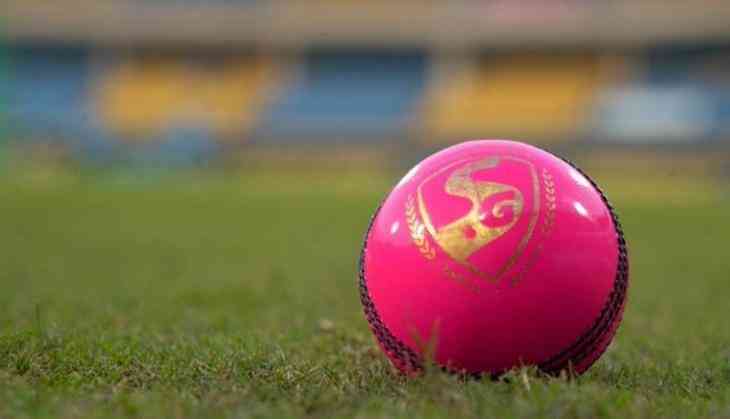
Earlier, Google suggested the name of a singer, a metro line in Delhi, a Bollywood movie and a colour when typed pink in the search engine. But as we near 22nd November the suggestion of a cricket ball has climbed up at a rate of knots with the same search.
In the monopoly of red, the pink ball will make its first surfacing in a Test match in India when they face Bangladesh at the Eden Gardens in Kolkata.
But why pink? Baby pink, berry pink, salmon pink. It is difficult to say with a conclusiveness that the law makers took all these variations of pink into regards before opting it as the colour of cricket ball for the day and night Test. They primarily required a shade which would be visible at night and one that would last for at least 80 overs. The red ball failed the first parameter and the white one did not have any chance to clear the second one. So came the mixture of two colours, the pink ball.
The change of colour fetched in change of nature in the cricket ball. The ball started to dart around more and for a longer time. The first-ever day and night Test between Australia and New Zealand concluded within three days with none of the teams crossing the 250 run mark. Records of batsmen have boosted since then but the pink ball’s characteristic of swinging more for long hasn’t altered.
“To make it easy to spot under lights, extra lacquer is applied over the pink ball so that it shines more. Naturally, the shine allows it to swing more and because of the extra lacquer, the shine also lasts longer than a red ball,” Paras Anand, the Marketing Director of sports goods manufacturer SG, told Hindustan Times.
The shine on a new red ball lasts for around 60-70 minutes but in case of pink ball, it can last over a session, giving pacers the feel of a new ball for over 30 overs, which might go against the batsmen.
The rationality behind making the ball brighter and shinier, however, came after complaints from batsmen in first class cricket. When the pink ball was tested, the batsmen had difficulties in sighting it. The bowlers too didn’t enjoy it much as the ball started losing its shade after 30-40 overs.
“The colouring process takes place in phases in order to maintain the pink colour. The red ball is made out of dyed leather. We take the raw leather, dye it once and leave it. But because pink is lighter, the leather is not able to absorb colour in the dying process. So the only way you can have the pink colour is by putting colouring pigment on the leather. We coat the leather with the pigment after the dying process.
“The pink colouring pigment is again added on the leather before the final stitching takes place. Some coating is done after the ball is stitched. Roughly it takes about 7-8 days to make a pink ball, which double the time we take to make a red one,” explained Anand.
The extra layer of colouring gives the ball a darker shade of pink. No wonder Ravichandran Ashwin confused it with orange during the training sessions in Indore. “Sometimes I don’t understand if it’s orange or pink, still coming to terms with that,” said Ashwin.
While more conventional swing will help the pacers, the pink ball can generate drawback for the likes of Mohammed Shami and Umesh Yadav, who rely a lot on reserve swing with old ball.
“Reverse swing probably will be difficult… We’ve seen Indian players start working on a red ball after 15-20 overs. They make one side heavier and keep the other side rough for the ball to reverse. That will be difficult in pink ball. The fielders will have to work very hard to maintain the shiny and rough sides of the ball,” Anand added.
The state of the pitch and outfield too play a major part in the Day and Night Test.
During the eleventh day and night Tests with the pink ball, 257 wickets have been cumulated by the fast bowlers. The spinners could only take 95. that, however could alter in Kolkata with the debut of SG pink balls, which has a visible seam than the Kookaburra and Duke once.
“With the seam being prominent for about 70-80 overs, the spinners will obviously be in the game throughout. Don’t be surprised if you see an Ashwin or a Jadeja picking up bag full of wickets in a session,” said Anand.
Also Read: India vs Bangladesh: All you need to know about India's first ever day and night Test


